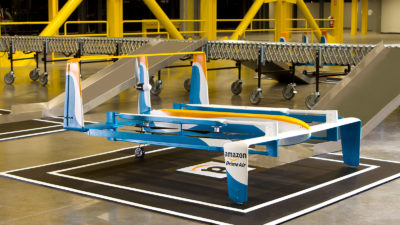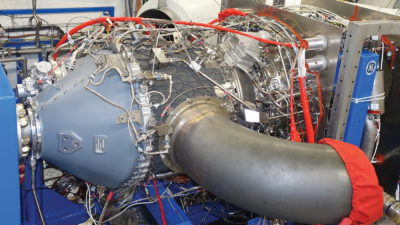Micro-perforations reduce drag; demonstrating machine learning for vortex identification
By KEITH BERGERON AND NATHAN HARIHARAN|December 2020
The Applied Aerodynamics Technical Committee emphasizes the development, application and evaluation of concepts and methods using theories, wind tunnel experiments and flight tests.
A novel method for reducing skin-friction drag in a turbulent boundary layer was developed at the University of Adelaide in Australia in January and February. Maziar Arjomandi, associate professor at the university and a member of the flow control group, found that such friction and associated turbulence production can be reduced by applying an array of microperforations on a surface with a backing cavity. The micro-perforations experiments, with variations in the geometric parameter settings for the perforations and backing cavity, produced reductions in turbulence intensity on the order of 13%. The results, funded by the Australian Research Council and the Sir Ross and Sir Keith Smith Fund, also show that microperforations on a wall are capable of suppressing the coherent structures, thereby passively controlling the turbulent boundary layer. Results from wind tunnel experiments employing an array of microperforations at the center of the plate indicate the optimum size of a perforated hole to be equal to nearly 10 viscous length scales.
In February and March, researchers at the U.S. Air Force Academy’s Aeronautics Research Center conducted propeller testing at the academy’s Aeronautics Laboratory in Colorado. The research focused on quiet and efficient propeller designs for electric vertical takeoff and landing vehicles and small unmanned aircraft systems. The test results have led to improved airfoils and tip configurations that reduce the power required for operation and the noise generated. Such benefits in decreased power and noise have been achieved by reducing the propeller tip vortex, using smoke visualization to confirm the new designs. Custom design software now enables users to prescribe a lift distribution from the hub to the tip of the propeller, unloading the tip to eliminate the tip vortex. A key finding of this effort: The Prandtl bell-shaped curve distribution, originally developed for aircraft wings, shows promise when applied to a rotating propeller.
Efforts to leverage machine learning techniques to enhance applied aerodynamic analyses continued this year, with the applied aerodynamics community generating large amounts of experimental and computational 3D field data. In March, a neural network-based, automated flow field physics-identification method was developed by researchers working under the Computational Research and Engineering Acquisition Tools and Environment portfolio of the U.S. Defense Department’s High Performance Computing Modernization Program, or HPCMP CREATE. In July, this neural network method was used to demonstrate the automated identification of tip-vortices in the flow field of a hovering rotor. Machine learning is making further contributions in the areas of aerodynamic reduced-order prediction, physics recognition and quality assessment with much potential for future applications.
Earlier in the year, researchers from Boeing and HPCMP CREATE demonstrated the benefits of the application of direct volume rendering techniques to visualize physics of complex 3D flow fields. Direct volume rendering techniques have been in existence for several decades but have predominantly been used in the medical imaging and gaming industries. For aerospace applications, direct volume visualization provides an enhanced view of the details of 3D aerodynamic flow field data, detailing both spatial breadth and technical depth. 3D volume rendering based visualization is particularly advantageous to understand fine-scale vortex evolution and breakdown in the wake of a hovering helicopter.
The agreement of simulation results with an open powered test database have accelerated the design of distributed propulsion systems proposed for all-electric aircraft configurations. Multiple research teams presented their computational fluid dynamics findings during two Aerodynamics and Performance of Integrated Propellers Special Sessions of the virtual AIAA Aviation Forum in June. Experiments conducted in 2019 on a scaled model of the NASA X-57 by Helden Aerospace, Empirical Systems Aerospace and NASA in the Lockheed Martin Low-Speed Wind Tunnel in Georgia provided the validation data. Although highly dependent on specific modeling techniques, the high-fidelity CFD with fully blade resolved methods and higher-order schemes gave the most accurate predictions when compared to the wind tunnel tests.
Contributors: Jennifer Abras, Maziar Arjomandi, Keith Bergeron, Mehdi Ghoreyshi, Nathan Hariharan, Tom McLaughlin, Juergen Rauleder and Charles Wisniewski



































